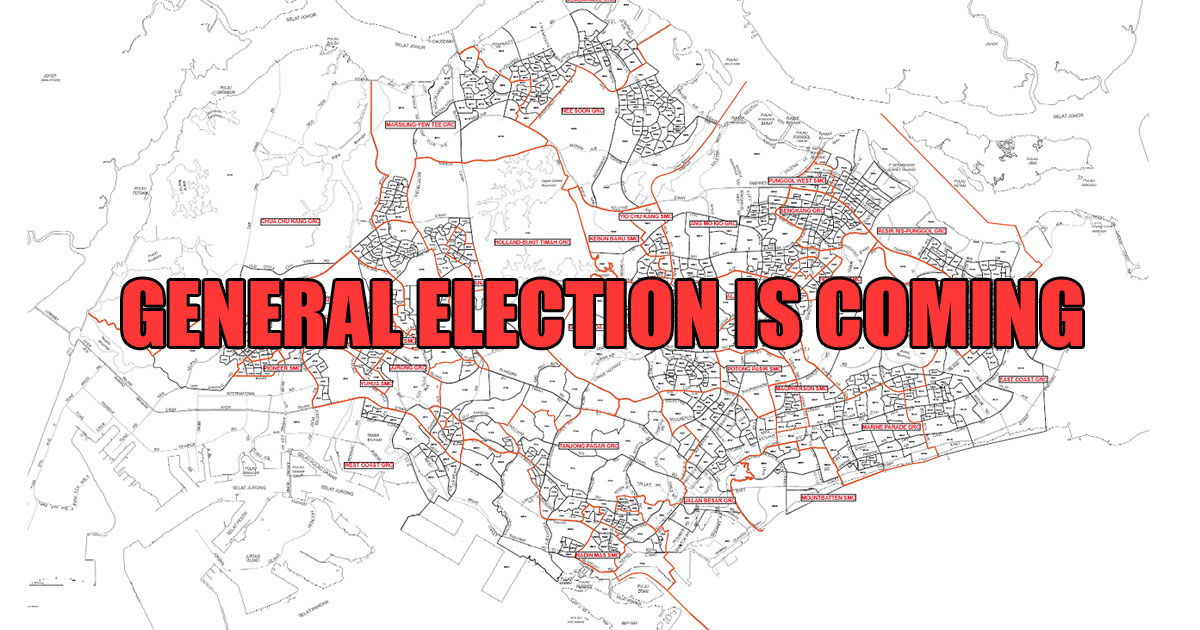The Electoral Boundaries Review Committee released its report on March 13, 2020, signalling the next general election is going to be called in Singapore in a matter of weeks or months -- or less.
Overall, there will be more electoral divisions.
There will be no more six-member Group Representation Constituencies (GRCs).
There will be 31 electoral divisions, up from 29.
There will be a total of 93 seats in Parliament, four more than the 89 currently.
A new Sengkang GRC has been created with four seats.
There will be 17 GRCs, up from the current 16.
There will be 14 Single Member Constituencies (SMCs), one more than the current 13.
The government has accepted the committee’s recommendations and will implement them in the next election.
What happens after report is released
President Halimah Yacob will dissolve Parliament next on Prime Minister Lee Hsien Loong’s advice.
The dissolution of Parliament had taken between just a day and more than two months from the release of the EBRC’s report in past elections.
In 2015, the report was released on July 24.
Parliament was dissolved a month later.
Polling day was on Sep. 11, 2015.
4 new SMCs
Four of the SMCs are new: Kebun Baru, Marymount, Punggol West and Yio Chu Kang.
Three SMCs have been wiped off the map: Fengshan, Punggol East and Sengkang West.
Workers’ Party's opposition-held Aljunied GRC and Hougang SMC wards remain.
Of the 17 GRCs, six have four members and 11 have five members.
The six-member GRCs have been reduced to five-member ones: Ang Mo Kio and Pasir Ris-Punggol.
The East Coast and West Coast GRCs will have five seats, up from four.
The other five-member GRCs are: Aljunied, Jurong, Marine Parade, Nee Soon, Sembawang, Tampines and Tanjong Pagar.
Bishan-Toa Payoh GRC, which currently has five MPs, will have four.
The other four-member GRCs beside the new Sengkang GRC are: Chua Chu Kang, Holland-Bukit Timah, Jalan Besar and Marsiling-Yew Tee.
4.65 MPs per GRC
Overall, one MP will serve 29,200 electors.
In the next election, 79 candidates will stand in GRCs.
This works out to an average of 4.65 MPs per GRC.
This is lower than the 4.75 MPs per GRC in the 2015 GE and the five MPs per GRC in 2011.
The figure had peaked at 5.36 in 2001 and 2006 before falling in the last two elections.
The GRC system was established in 1988 to ensure that the minority races will be represented in Parliament.
GRCs can have three to six MPs and at least one of them must be from a minority race.
The number of GRCs with a Malay MP cannot be more than three-fifths the total number of GRCs.
8 months for report to be released
The EBRC, a committee made up of five senior public servants, took eight months to release its report.
The committee was formed in August 2019.
The committee considers population growth and shifts due to housing development for each election.
The number of electors in the latest Registers of Electors as of April 15, 2019, is 2,594,740.
This is an increase of 134,256 electors from 2,460,484 electors certified on April 7, 2015.
Deputy Prime Minister Heng Swee Keat said a few days prior the report's release that election will still carry on during the Covid-19 outbreak.
If you like what you read, follow us on Facebook, Instagram, Twitter and Telegram to get the latest updates.
